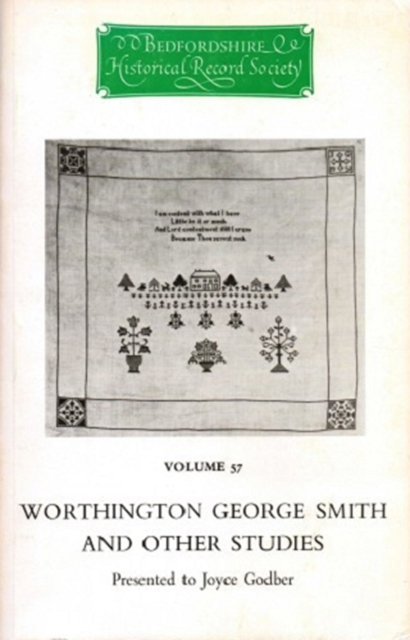Book contents
- Frontmatter
- Contents
- Contributors
- Illustrations
- Foreword
- Bedfordshire Chapelries: An Essay In Rural Settlement History
- Bedfordshire Heraldry: A Conspectus
- Middlemen In The Bedfordshire Lace Industry
- Joshua Symonds, An Eighteenth-Century Bedford Dissenting Minister
- The 1830 Riots In Bedfordshire - Background and Events
- A Bedfordshire Clergyman of The Reform Era and His Bishop
- Worthington George Smith
- Aspects of Anglo-Indian Bedford
- The 1919 Peace Riots In Luton
- Index
- Miscellaneous Endmatter
Worthington George Smith
Published online by Cambridge University Press: 03 August 2023
- Frontmatter
- Contents
- Contributors
- Illustrations
- Foreword
- Bedfordshire Chapelries: An Essay In Rural Settlement History
- Bedfordshire Heraldry: A Conspectus
- Middlemen In The Bedfordshire Lace Industry
- Joshua Symonds, An Eighteenth-Century Bedford Dissenting Minister
- The 1830 Riots In Bedfordshire - Background and Events
- A Bedfordshire Clergyman of The Reform Era and His Bishop
- Worthington George Smith
- Aspects of Anglo-Indian Bedford
- The 1919 Peace Riots In Luton
- Index
- Miscellaneous Endmatter
Summary
Worthington George Smith was born in London in 1835, descendant of a long line of farmers who had settled at Gaddesden Row in north-west Hertfordshire. For the previous three hundred years most of his relations on his father’s side had spent their lives in the villages of Kensworth, Markyate, Studham, Caddington and Aston Clinton, close to Gaddesden, and before that at Dagnall and Edlesborough in Buckinghamshire, where in the fifteenth century they held the Rectory Manor of the Priors of Charterhouse.
The bones of his ancestors lay in the churchyards of north Hertfordshire and south Bedfordshire, ‘and that is why’, he said years afterwards, ‘I have so often crossed and re-crossed the fields, traversed the old roads, visited and re-visited the cottages and the churches of my own people of the past. That is why I have fraternised and still fraternise with the village folk - their people are my people.’
His father, George Smith, had been born at Gaddesden Row in 1804. Of his grandfather, James, little is recorded, save that he came from Kensworth, and was known to his friends, for some inexplicable reason, as Bunger-shanger. In 1830 George Smith married Sarah Worthington from the Nottinghamshire village of Laxton, though what brought them together we do not know. A few weeks after the marriage George took up a post in the Civil Service in London, where he soon afterwards met with an unspecified accident. With his young bride he set up home at 19 Aske Street, Shoreditch, a residential area on the edge of the city, where, for £23 a year, he rented a three-storeyed terrace house with a small backyard. There, on 23 March 1835, Worthington George Smith was born.
As a child it is probable that he spent many hours exploring nearby Shoreditch Common, which in those days stretched from Aske Street to the Angel at Islington. He began his schooling at St. John’s Parochial School; a building still in use, although Aske Street has been replaced by modern flats, and enjoyed his schooldays in spite of the usual schoolboy setbacks. ‘The wisest of us are liable to error’, his schoolmaster once observed after he had mistaken Worthington for another boy, and given him a sudden terrible thrashing.
- Type
- Chapter
- Information
- Worthington George Smith and Other Case Studies , pp. 141 - 180Publisher: Boydell & BrewerFirst published in: 2023

